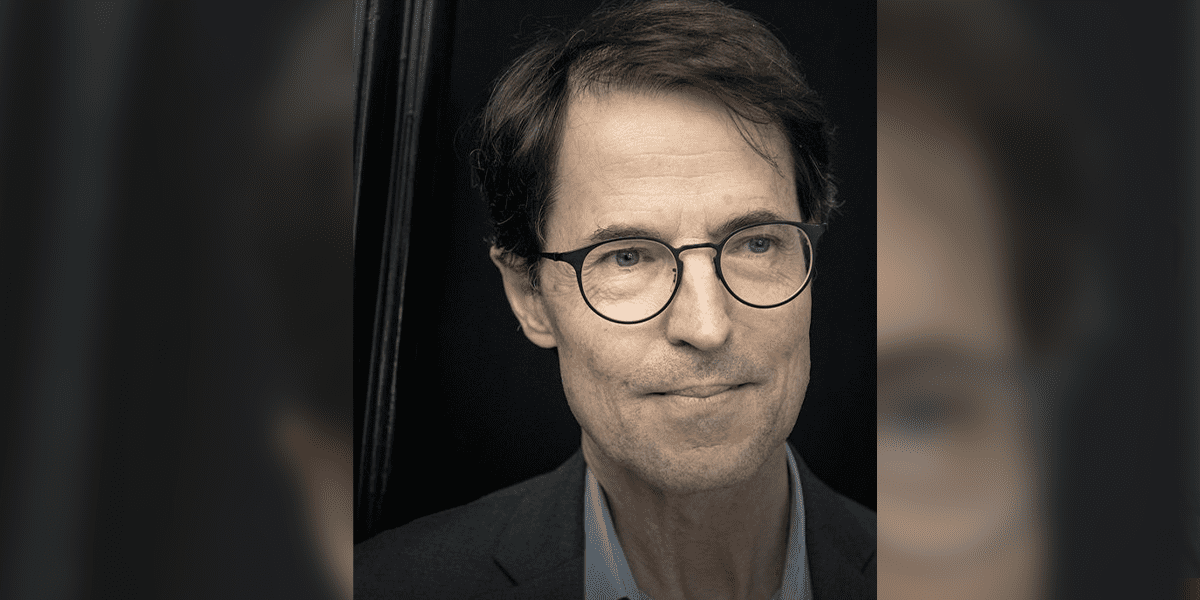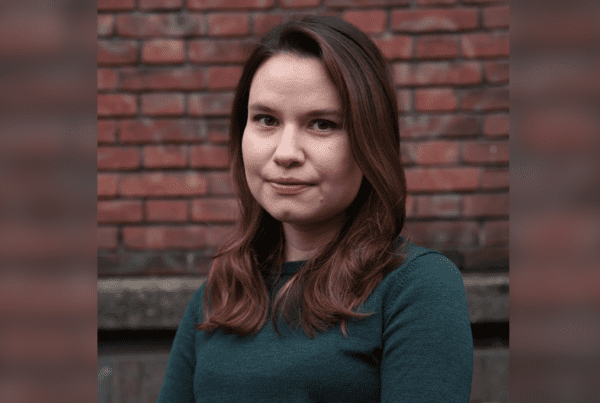Rogers, unlike some scholars of populism, you define populism along two dimensions: the vertical, characterized by inequality between groups, and the horizontal, describing the differences between insiders and outsiders. Can you talk about the value of this two-dimensional approach? And do you find that your definition applies equally to populists of the right and of the left?
Everyone agrees that appeals to “the people” are central to populism. The two-dimensional definition highlights the ambiguity of such appeals, which may invoke the common or ordinary people (the people as plebs or underdog), the sovereign people (the people as demos), or the bounded and distinctive people (the people as moral or cultural community) – or all of these at once. In the vertical dimension, “the people” are defined in opposition to those on top – to the economic, political, or cultural elite – but also, in many cases, to those on the bottom. In the horizontal dimension, “the people” are defined in opposition to a threatening “outside.” The two dimensions are closely – I would say constitutively – related in populist discourse, in that economic, political, and cultural elites are represented as “outside” as well as “on top.” They are seen not only as comfortably insulated from the economic struggles of ordinary people but also as differing in their culture, values, or way of life.
The positioning of elites as outside as well as on top is found in left-wing as well as right-wing populism, but with a different focus. Left-wing populism emphasizes the elite’s economic outsiderhood: its supranational or global economic ties, horizons, and commitments. Many right-wing populisms are likewise critical of global capitalism and especially of global finance. But right-wing populisms are much more likely than left-wing variants to emphasize elites’ cultural outsiderhood, their difference – in culture, values, or way of life – from ordinary people. Right-wing populisms are also likely to underscore the outsiderhood – the otherness – of those on the bottom: those on top, themselves characterized as outsiders, are then blamed for prioritizing or privileging those who are at once on the bottom and outside, while neglecting the problems and predicaments of “ordinary people.”
Building on that, there is a debate among scholars about populism’s character and whether populism is an ideology, a style, or something else. You’ve been firm in your assessment that populism is a discursive and stylistic repertoire. But I’m curious about what conditions you think explain why voters are attracted to this discursive style today. Are people today, in general, attracted to the populist style for the same reasons as in 2016? Or in 2008? Or even further back? Does populism emerge each time “liberalism” – in its different definitions and interpretations – is in trouble?
The question elides discourse and style, but I would like to distinguish between them, between what is said and how it is said (as well as how one behaves, dresses, and so on). I used the somewhat awkward expression “discursive and stylistic repertoire” so as to include stylistic aspects of populist appeals – notably a “low,” unrefined, crude, colorful, “relatable” communicational and body-behavioral style – as one element of the repertoire, without treating that stylistic element as primary. So I would not want to limit the question of the appeal of populism to a question of style. Discourse as I understand it is not just a matter of style; it is a matter of substantive political orientations, even if these orientations lack the consistency and elaborateness of an ideology.
For me, explaining the appeal of populism – an appeal indicated not only by the electoral success of clearly populist parties and candidates but also by the frequent deployment of elements of the populist repertoire by other parties and candidates – means explaining the traction of the various discursive and stylistic elements comprising the populist repertoire. In addition to the “low” communicational style and the claim to speak in the name of “the people” against both “the elite” and a threatening outside (which I admit is not it itself very substantive), these include, in my account, the anti-institutionalist stance that delegitimizes the complex workings of mediating institutions in the name of immediacy, transparency, and directness; the majoritarianism that asserts the interests, rights, and will of the mainstream against those of ethnoracial, religious, or gender and sexual minorities; the repoliticizing stance that asserts democratic decision-making authority over matters withdrawn from political control and entrusted to courts, bureaucracies, or experts; and the forms of economic, securitarian, or cultural protectionism that claim to protect “the people” against threats from above, from below, and from outside.
What explains the appeal of these claims? In the European and North American context, two sets of decades-spanning structural transformations have been favorable to populist claims-making. The weakening of party systems, the individualization of social structure, and the mediatization of politics have made politicians less dependent on parties and more inclined (and able) to appeal directly to “the people”; they have fostered a thin, generic form of populism. At the same time, large-scale immigration, economic restructuring, and new waves of emancipatory liberalism have created opportunities for more specific populist claims to protect “the people” and their accustomed way of life against putative threats from above, from outside, or from the margins of society.
Against the backdrop of these structural transformations, unfolding on a time scale of decades, one can identify particular conjunctures favorable to the intensification and clustering of populist claims-making: 2014-16 marks one such conjuncture, defined by the convergence of the economic and sovereign debt crises, the refugee crisis, and the security crisis occasioned by a wave of terrorist attacks. And then of course there are the situational contingencies that explain more fine-grained variations across space and time. But broadly speaking, I do think that the underlying structural factors that invite and incentivize populist claims-making have remained largely similar even as conjunctural and of course situational factors have changed.
The underlying structural factors that invite and incentivize populist claims-making have remained largely similar even as conjunctural and of course situational factors have changed.
And yes, the opportunities for populism are closely related to certain vulnerabilities of liberalism. As you indicate, there are many ways of construing liberalism and its troubles. But in broad and excessively schematic terms, one might say something like the following. Political liberalism’s commitment to minority rights has created an opening for populist majoritarianism; its uneasiness with borders and immigration controls has played into the hands of restrictionists; and its distrust of popular decision-making – its preference for appealing to the courts to protect unpopular rights and for entrusting complex decisions to experts – has made it vulnerable to populist claims that liberalism is undemocratic. Cultural liberalism’s embrace of new forms of difference and political correctness has provoked a powerful populist backlash. And economic liberalism’s indifference to inequality and to the bounded solidarities of community and nation has invited populist claims to protect “the people” against the disruptions of globalization, the frictionless cross-border movement of goods, labor, and capital, and the indignities of precarity.
This brings us to the broader picture. Your recent book Hyperconnectivity and its Discontents treats digital hyperconnectivity – a condition in which “everyone and everything [is connected] to everyone and everything else, everywhere and all the time” – as a “total social fact” that reconfigures all domains of life. You focus in the book on transformations of selves, interactions, culture, economics, and politics. Regarding politics, we often hear about online radicalization and the internet’s relationship to various radical and extreme ideologies. I’m curious how you see the connection between hyperconnectivity and our political moment. How is the modern rise of populism, illiberalism, and the far right etc. connected to the phenomena you describe?
The sharp disenchantment with the political affordances of digital hyperconnectivity since the middle of the last decade – the displacement of dreams of digital democracy by nightmares of digital authoritarianism and extremism – makes it tempting to blame hyperconnectivity, and social media in particular, for all contemporary political ills. But this temptation should be resisted: obviously populism, illiberalism, and the far right have deep historical roots that reach back long before hyperconnectivity. That said, the contemporary communications ecology and digitally networked public sphere do profoundly shape our politics.
Regarding populism, I would underscore the paradox that hyperconnectivity fosters both populism and its seeming antithesis, technocracy. Hyperconnectivity has a twofold affinity with the logic of populism. First, it is a technology – and an accompanying ideology – of immediacy. By circumventing or disrupting institutional intermediaries of all kinds, it promises to connect people directly to news and information, audiences directly to creators, and citizens directly to political leaders. And second, hyperconnectivity contributes to the popularization of culture and politics by opening up new forms of popular participation, making data-enabled calculations of popularity more central to culture and politics, and incentivizing “low” political styles that are attention-seeking and taboo-breaking.
Yet at the same time, the new modes of algorithmic governance enabled by hyperconnectivity, premised on new forms of expert knowledge, are deeply technocratic. Technocracy and populism are generally understood as antithetical. Yet as Christopher Bickerton and Carlo Invernizzi Accetti have recently argued, the reciprocal antagonism of populism and technocracy conceals an underlying affinity: both are opposed to the complex and messy institutional mediations of party democracy. As the structural foundations of party democracy have eroded, political competition has come to be structured by what they call a “technopopulist” political logic, characterized by conjoined appeals to “the people” on the one hand and to problem-solving “competence” on the other.
The reciprocal antagonism of populism and technocracy conceals an underlying affinity: both are opposed to the complex and messy institutional mediations of party democracy.
Bickerton and Invernizzi Accetti are not concerned with new communications technologies; the “techno” in their “technopopulism” refers to technocracy, not to technology. Yet hyperconnectivity powerfully reinforces the synthesis of populism and technocracy that they describe. As a technology and ideology of immediacy, it exacerbates the very crisis of institutional mediation to which it claims to respond, notably by furthering the hollowing out of parties and of the press as mediating institutions. As a technology of the popular, hyperconnectivity generates new ways of mobilizing, consulting, and measuring “the people” and new ways of claiming to act on their behalf. And as a technology of knowledge, it affords new ways of knowing and governing the social world, new ways of recasting social problems as technical problems.
Regarding illiberalism, I would highlight three ways it has been fostered and amplified by hyperconnectivity. First, the eclipse of gatekeepers in the digital public sphere and the ease of establishing, discovering, and participating in virtual communities of the like-minded have deepened the fragmentation of the public sphere and allowed previously latent or marginal illiberal publics to come together, flourish, and acquire new visibility online.
Second, the dynamics of what might be called the “attention polity” – the gamification of public conversation on Twitter and other platforms and especially the incentives to mobilize moral outrage in order to generate engagement in online forums – nudge public discussion in general in an illiberal direction.
Third, some new forms of algorithmic governance, premised on machine learning and superabundant digital data, capable of operating fully automatically and even preempting the possibility of acting differently, are themselves profoundly illiberal. Illiberalism, that is, is not simply externally and contingently related to hyperconnectivity; it is also inscribed in the very nature some of the new modes of governance enabled by hyperconnectivity.
You have argued that populism and nationalism are “analytically distinct but not analytically independent” phenomena. Could you unpack that distinction? And secondly, how do you assess the relationship between populism and illiberalism? Do you see that relationship in similar terms, i.e., analytically distinct but not analytically independent?
In that piece, I outlined the very different conceptual origins, trajectories, and constitutive references of populism and nationalism, while highlighting at the same time zones of conceptual overlap. I was responding to an argument for treating the two as conceptually entirely distinct – for limiting populism, definitionally, to the vertical opposition between people and elite, nationalism to the horizontal opposition between inside and outside. What this surgical separation missed, I felt – and what my two-dimensional definition sought to capture – was the productive polysemy of appeals to “the people,” and the way such appeals routinely position “the elite” as both on top and outside.
Illiberalism is defined in opposition to liberalism, while populism does not have a single constitutive conceptual other
As for the relationship between populism and illiberalism, I hadn’t thought of putting it this way, but yes, I do think I would see them as analytically distinct though not as entirely analytically independent. They are clearly analytically distinct, not least for reasons you yourself have highlighted: illiberalism – at least on some understandings – is an ideology, while populism, understood as a discursive and stylistic repertoire, is not. And illiberalism is defined in opposition to liberalism, while populism does not have a single constitutive conceptual other; it is instead constitutively linked to “the people” and thereby to the conceptual framework of democracy rather than liberalism.
But there are large zones of conceptual overlap as well. To characterize populism as intrinsically illiberal may be too strong, but several elements of the populist repertoire as I understand it stand in strong tension with or even direct opposition to key tenets of at least certain forms of liberalism. Populism’s hostility to institutional mediation clashes with political liberalism’s insistence on such mediation, its majoritarianism with liberalism’s commitment to minority rights. Populism’s claims to protect jobs and welfare directly challenge economic liberalism; its claims to protect culture and way of life are in tension with cultural liberalism’s embrace of multiculturalism, cosmopolitanism, and diversity. And populism’s “low” communicational style performatively devalues the ideal of reasoned deliberation that is central to much liberal political theory.
Rogers Brubaker is Distinguished Professor of Sociology at the University of California, Los Angeles, where he holds the UCLA Foundation Chair. Brubaker has written widely on social theory, immigration, citizenship, nationalism, ethnicity, race, gender, populism, and – most recently – digital hyperconnectivity.







